Behind the red door at 48 Doughty Street, London, lies the Charles Dickens Museum.
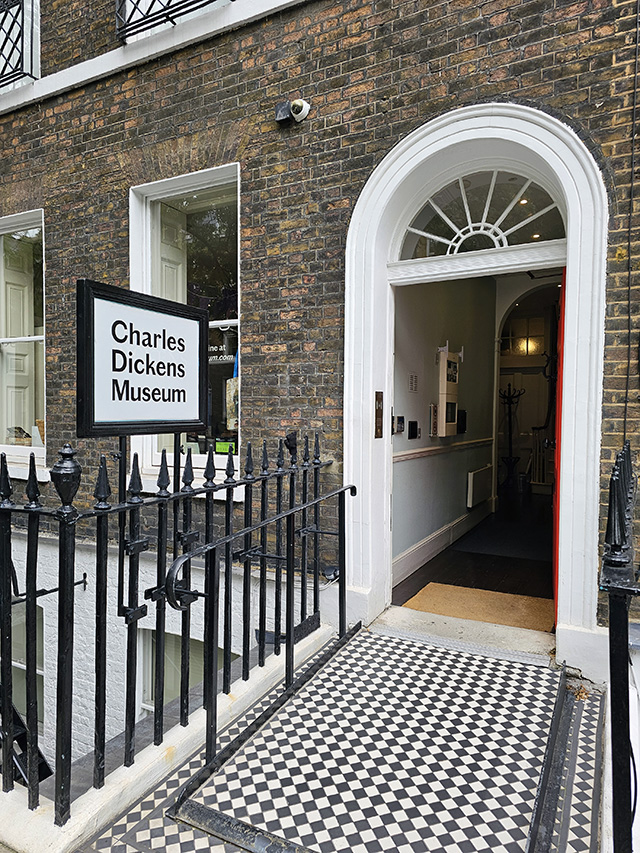
Doughty Street in London is a broad, tree-lined street of mainly Grade II-listed Georgian houses, built between 1790 and the 1840s. The street has been home to a number of notable residents, including Edmund Yates (journalist, novelist and dramatist), Vera Brittain (author and journalist), Winifred Holtby (novelist and journalist), Charlotte Mew (poet), E. M. Delafield (novelist), Sir Travers Humphreys (judge), and, of course, Charles Dickens.
In the Victorian era, it was an exclusive residential street with gates at either end to restrict access. These days, cars line the open street, but it is not a busy part of the city.
48 Doughty Street was home to Charles Dickens and his young family for nearly 3 years. He moved in in 1837 when he was a little-known writer. By the time he left, he was famous for having written The Pickwick Papers, Oliver Twist, and Nicholas Nickleby.
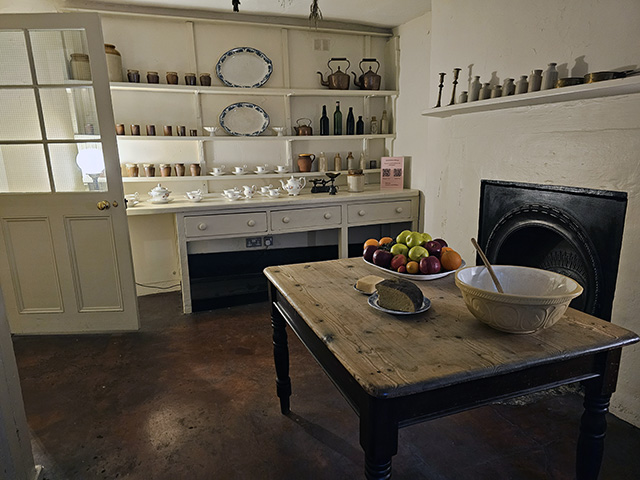

Dickens House Museum opened 100 years ago in 1925 after the Dickens Fellowship saved the building from demolition, having raised a mortgage and bought the freehold. They then raised funds and put together a collection to exhibit at the house. Today, the house is set up as a fairly typical middle-class Victorian home, just as it might have looked when the author himself lived there. It houses furnishings, portraits and other items known to have belonged to Charles Dickens.

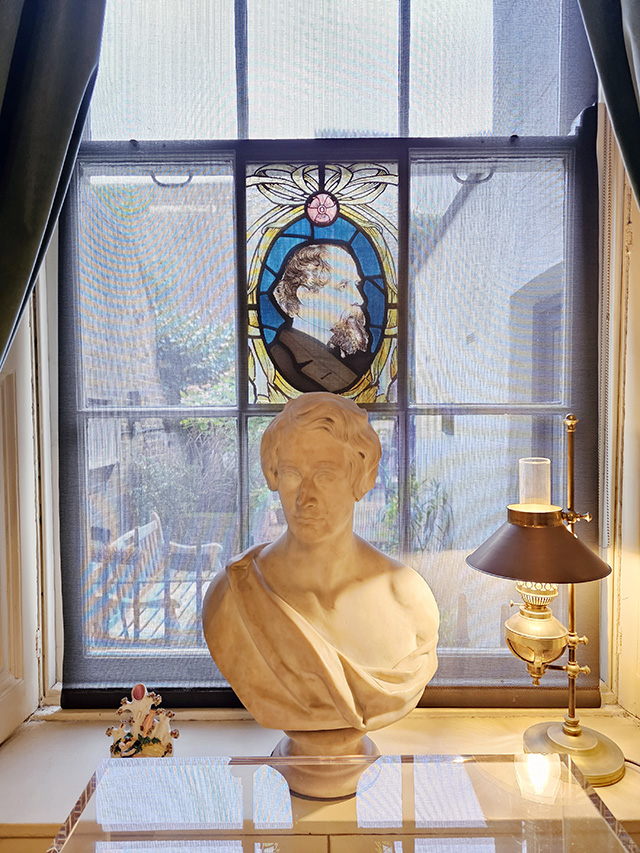
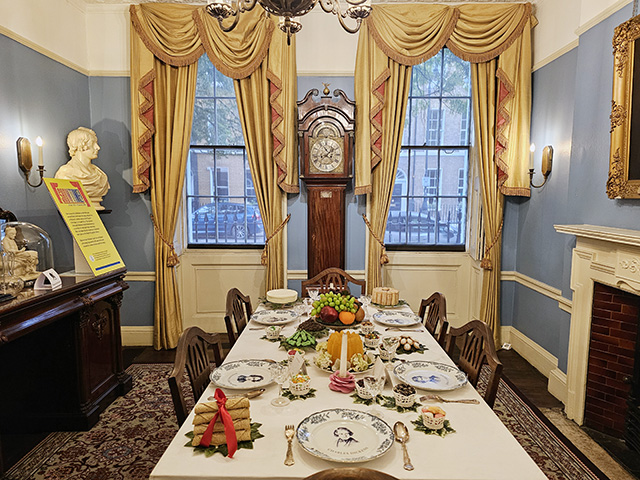
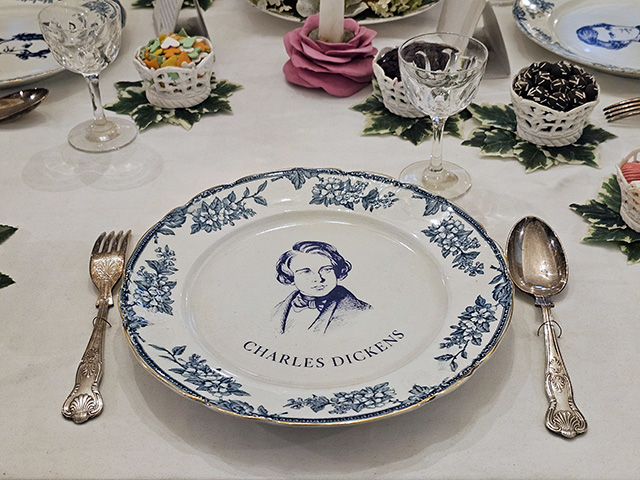
The Charles Dickens Museum is currently open Wednesday to Sunday from 10am to 5pm. I visited the museum on a Saturday morning, and whilst there were quite a few people wandering around, it wasn’t overly busy. I had pre-booked my ticket online for £13.58 (which included a booking fee), and entry was swift.
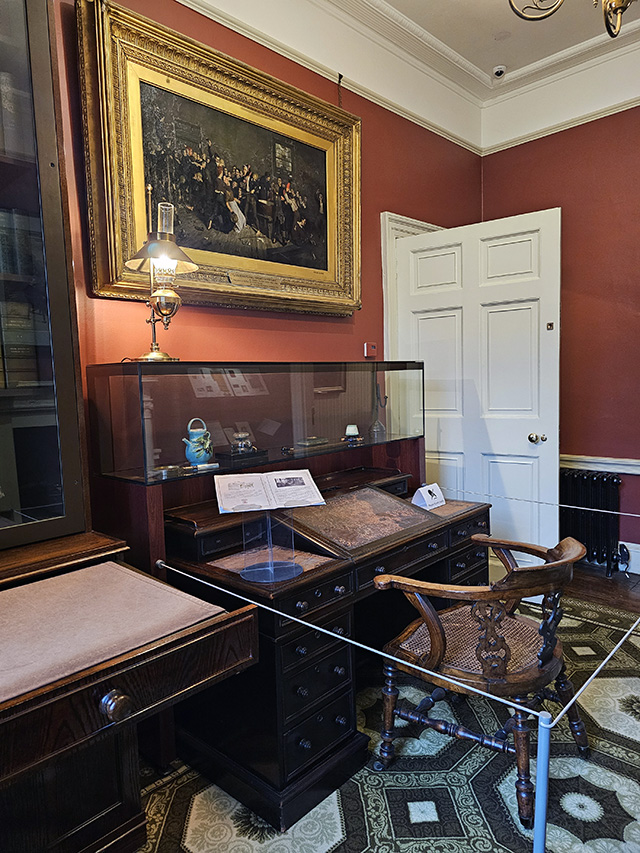
I found there was a great deal to see at the museum, and plenty of information dotted around the place. For those who’d like more information, online bookings include a link to download an audio guide, or you can purchase the official guide to the Charles Dickens Museum.
There are five floors to the museum: the ground floor (where you begin exploring), the basement, the first floor, the second floor, and the third floor. I certainly got a bit of a workout going up and down the flights of stairs.
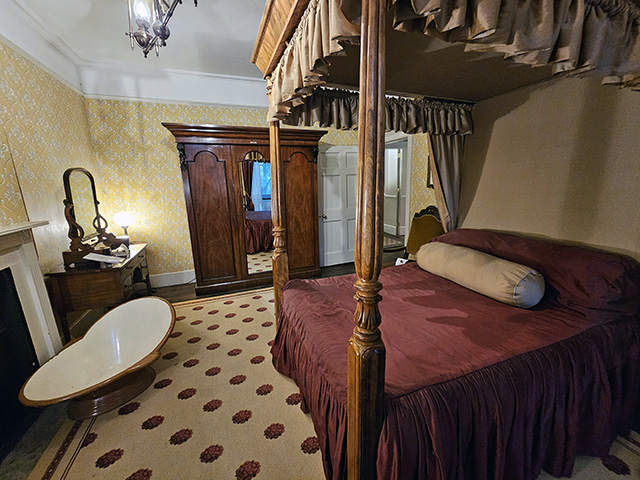
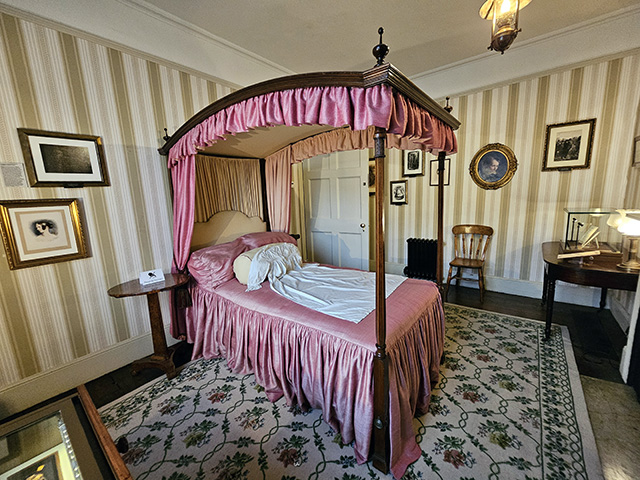
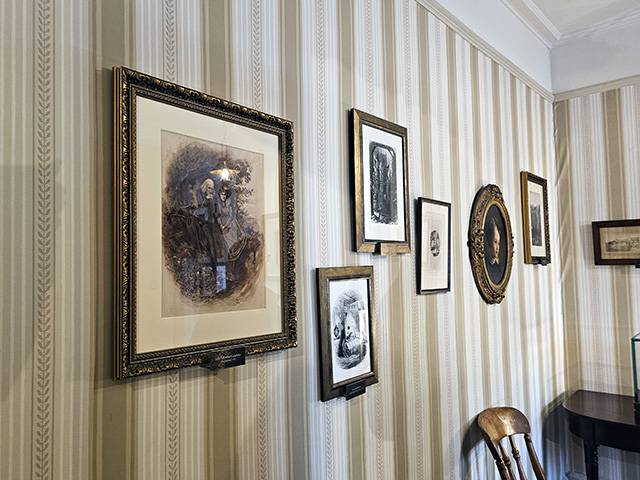
For anyone with accessibility needs, the Charles Dickens Museum website has an informative Accessibility page detailing not only access information for those in wheelchairs and other mobility aids, but also noise levels, lighting etc. They have been very thorough! While you might not expect this Georgian building to be accessible to wheelchairs, they have actually installed a lift in the neighbouring house and all floors, bar the attic level, are accessible (though it has to be remembered that these houses have narrow corridors and doorways, so larger wheelchairs may not be able to access the museum).
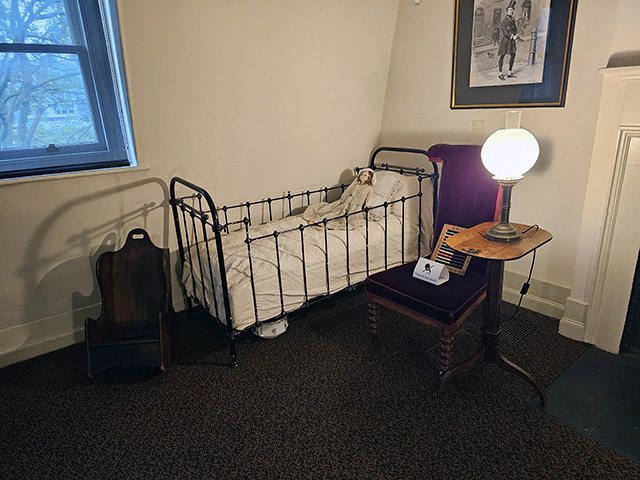
A visit to the gift shop on the ground floor is a must. I purchased some greeting cards and bookmarks, but could have bought so much more. If after exploring the museum you’re thirsty or hungry, then you’re in luck. Behind the gift shop, you’ll find The Artful Tea Room and garden.
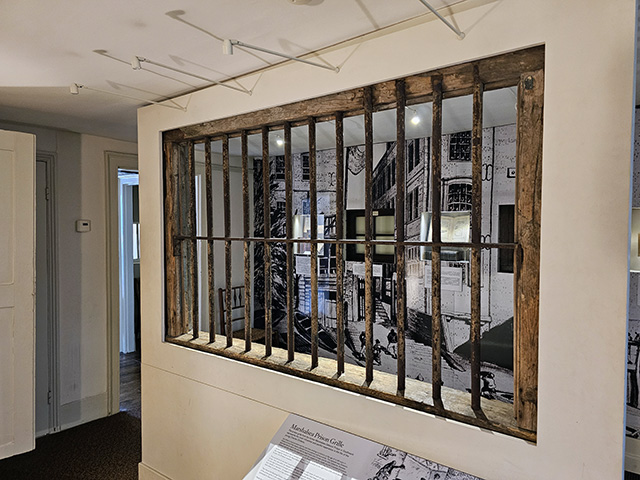
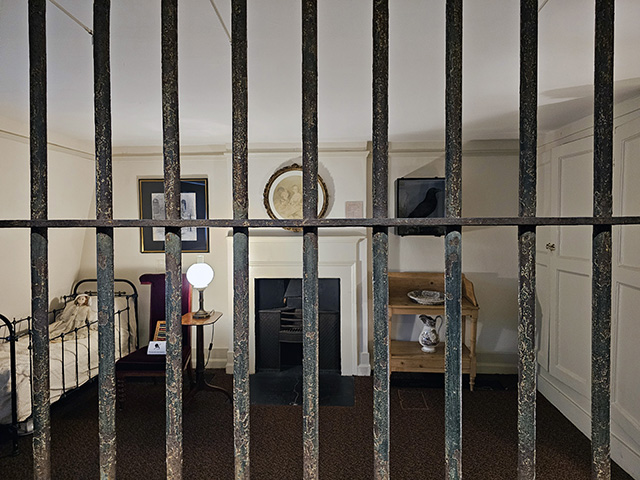
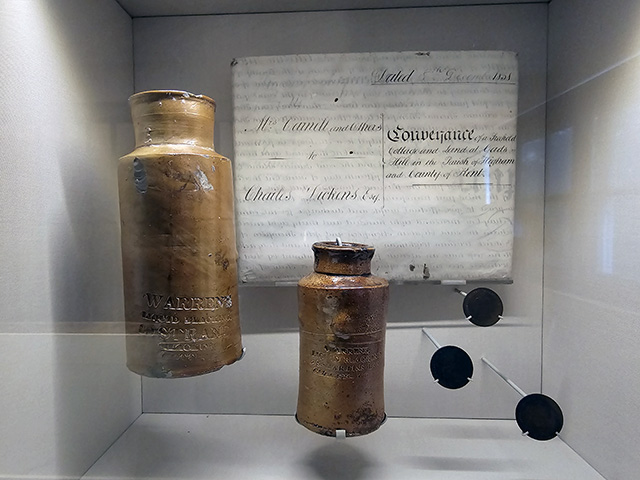
The Charles Dickens Museum is easy to get to with Russell Square tube station only a 5 minute walk away, Chancery Lane tube station a 10 minute walk away, and King’s Cross/St Pancras tube station a 15 minute walk away. There are also bus stops nearby. For anyone mad enough to drive in central London, on-street parking is available for Blue Badge holders, otherwise alternative parking can be found nearby in Russell Square.
If you are a literary lover and want to get out of the hustle & bustle of the busier areas of central London, this is a wonderful place to visit. There are other great attractions within walking distance, and I found myself heading to The Postal Museum just a few streets away.

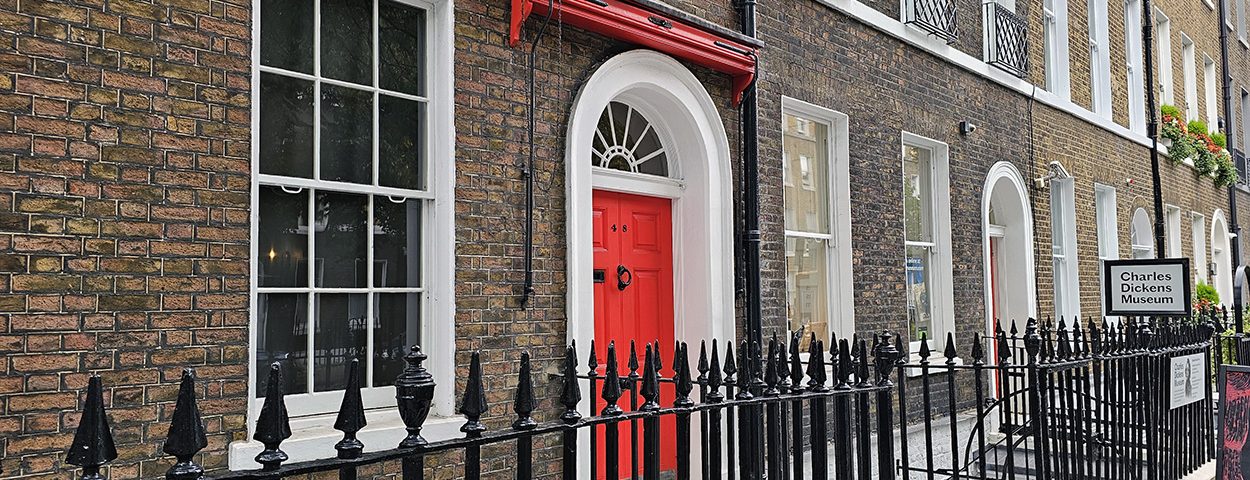
Oh, yes. This is a place I would enjoy. That’s pretty amazing that they’ve been able to arrange access to all the floors! I got tickled looking at that iron crib/cot. It certainly wouldn’t meet today’s safety regulations!
I hope you’re planning a blog post on the postal museum, as well.
I certainly am planning a Postal Museum post!
As a lifelong admirer of Dickens and his works, I have no doubt that I would have very much enjoyed this visit.
You have so much history to view in the UK! Thanks for sharing your visit.
Who hasn’t heard of Charles Dickens, Nikki. What a thrill to walk in between his belongings and in the past. Great series of pictures and I am sure the it was a very enjoyable visit. Thanks for sharing. You always have a wonderful text with your posts.
Have a wonderful day.
Thank you.
What an amazing place to have visited. One can always enjoy is books and read them again and again.
What an interesting place to visit, it appeals to me very much. It’s only in recent years that I’ve read anything by Dickens but I’m now working my way through his novels and enjoying them greatly.
Having read quite a bit about his life at Doughty Street, it is good to see your photos brining it alive for me, thank you, Nikki
Thank you for posting about this, Nikki. It’s a spot I didn’t get to in London but I’m hoping to return in the spring and I’d love to see this. It sounds fascinating and looks beautifully done. Years ago a dear friend gave me a cup from this museum that I treasure (she has since died) and yet another reason I’d like to visit. I might have a real packing problem after the gift shop!
I hope you get to visit!
What an honor it would be to pass through that kind of history and culture, all within the confines of a museum full of his belongings, Nikki. I doubt I will ever see it with my own eyes but, because of your fabulous images, I feel like I HAVE seen it in real life. Thank you.
Thank you for your lovely comments.
What a wonderful place to visit. I will keep this museum in mind if we ever get back to London (and I hope we do). Your photos have provided a good overview. I am curious about the difference between the Preparation Room and the Kitchen.
This is definitely somewhere I would love to visit! Thank you for sharing Nikki! xxx
I have been to the Postal Museum but not this one, also the nearby Foundling Museum. So much to see, so little time! Perhaps I’ll get to this one on our next visit.
That’s fascinating!
I didn’t go to this one, but I would like to walk down that street, where all the famous writers lived. The Postal Museum was such a fun experience, that’s a museum I would love to visit again.
I’m so glad they saved the house and were able to buy it. Modern times we tear down too much.
That looks to be interesting place to visit. I’m nota. great lover of Dickens’ work, but I’m in a minority.
He had a pretty interesting life, as I recall, Nikki. That prison grill is a grim reminder. Thanks, I enjoyed taking the tour with you xx
Wonderful and i love that the museum has been home to so many other writers too.
He was an amazingly talented person. One in a billion.
Looks like a wonderful museum. Thanks for taking us along to see it!
I always enjoy visiting historic homes. They let you get a better feel of what life was like.
This is a hidden gem that I have not heard of. I need to add it to my list of things to do on a day trip to London.
Glad they were able to purchase the place the create a museum there. Your photos are wonderful!
-Soma
Looks a fun place to visit! I love all the floor tiles, especially the ones at the entrance of the house.
Fabulous post and photos. I love historic museum homes and this looks like an awesome one. I bet you had fun!